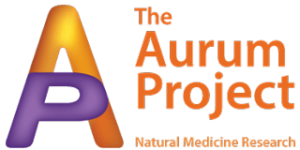When the US President announces that pregnant women should “Stop taking Tylenol” (acetaminophen in the US, also known as paracetamol in Australia) one would imagine that the world would listen. It did listen, then an astonishing backlash occurred; the world’s public health officials responded by stating that: “Paracetamol is completely safe for pregnant women to take. However, with this emphasising of the assured safety of taking paracetamol during pregnancy, a large amount of paracetamol research to the contrary has been ignored.
Most families rely on paracetamol to get through life. The idea of not having paracetamol to take for pain and fevers remains unthinkable. So the stance of the world’s health authorities works in favour of the reliance on paracetamol as the ‘go to’ medicine. To accept the recommendation to stop taking a relied upon medication, the public needs to know what is behind such a statement, and be offered a safe alternative.
It is worth knowing that the risks of taking paracetamol/acetaminophen during pregnancy and autism have been sitting in the research, unheeded. Perhaps overlooked, despite the fact that researchers have been sounding the alarm about a connection between paracetamol and autism and other neurodevelopmental disorders, such as ADHD, for many years. In 2021, in the journal Nature Reviews Endocrinology, 91 scientists published a signed consensus statement; that a rapidly growing body of research does indicate that prenatal exposure to acetaminophen/paracetamol can affect foetal development and so increase the incidence of neurodevelopmental disorders.
A common response to recommendations that challenge the status quo, is to ignore the evidence by criticising the methodology and study quality. This is a time consuming pursuit and inflames passions, that doesn’t result in any positive outcome for those on either side of the debate. However, there is an abundance of good quality research that warns of the impacts of paracetamol on neurodevelopment during pregnancy and after birth as well.
No one can know the impact of the American President’s recommendation in homes around the world. Might it encourage pregnant women to take paracetamol with more caution? How much is safe to take? When is it safe?
Researchers have also been sounding the alarm that when it is given directly to young babies and toddlers, paracetamol is also an autism risk.
Paracetamol is taken mostly for pain and fever at any age. In the last generation, we have been educated to fear fevers. The Royal Children’s Hospital’s (RCH) survey from Melbourne Australia, reveals that 40 per cent of people think that a fever of over 38.5º could be fatal.
A new message about paracetamol/acetaminophen emerged from health authorities after President Trump’s announcement too. Fever in pregnant women must be treated, to avoid the risk of foetal defects. To get a bit more clarity: is it fever or the infection that is problematic? Women need to know which infections are involved and how to avoid them – not ‘just take paracetamol and you will be safe’. The clarification is needed, that paracetamol does not treat infections, it treats the fevers that are caused by the infection.
Fever is a healthy response to infection by helping the body extinguish the organism that is causing the fever. It is not an illness. A 2020 study published during COVID: Let Fever Do Its Job says that “Fever targets and damages the disease-causing cells without affecting the body’s healthy cells” and “blocking a fever can be harmful because fever is the body’s actual defence against the infection”. The awareness of this dynamic is growing, and in homeopathic texts it has long been understood that fevers have real benefits for health in the long-term.
Parents need clear guidelines. If you are pregnant, how high does a fever need to be before you treat it? When does fever need treatment? The RCH also highlights that fever is a healthy immune response. Rather than looking at the temperature itself, it is safer to notice how sick a person is. The RCH website offers guidelines on fever management, for when fevers are above 38ºC in babies under three months, and when a fever is high and ongoing, they require medical attention.
Women can be educated to optimise their immunity, prioritise good nutrition and also avoid being around people who are sick. These recommendations are easy for everyone to follow, because they make sense.
Just one generation ago, pregnant women were warned to take no medications at all unless it was really necessary. This reason for this advice is that when a pregnant woman takes any medication, it crosses the placental barrier and reaches a growing baby, which includes its brain. This cautionary message about medications has been lost, leaving few warnings regarding taking a range medications during pregnancy, other than avoiding recreational drugs like tobacco and alcohol. Paracetamol, like alcohol, can also affect the liver.
In the heat of the debate about the safety of paracetamol, choosing caution seems to be a sensible approach. In the situation of a contaminated food product being found in a supermarket food line, every single source of that food, would be recalled and reintroduced only when there is complete certainty that it is safe to consume. There is a duty of care for public health authorities to take the same action regarding paracetamol/acetaminophen, until there is no doubt about its safety.
In absolute contradiction to President Trump’s recommendation, health authorities around the world have reassured us that paracetamol is ‘totally safe for pregnant women to take’. Would there be so many studies on neurodevelopmental risks of paracetamol/acetaminophen if it really was settled science? A more informed response, such as reviewing the research and issuing caution to the public would be more prudent, especially for expectant mothers.
In response to the president’s announcement, the US Food and Drug Administration (FDA) is implementing a label change on packages of Tylenol (acetaminophen/paracetamol) with a warning of an association with autism and ADHD if used during pregnancy. It does not mention the risks of giving directly to babies and toddlers. In Australia, the Therapeutic Goods Administration (TGA) has formally announced that it “ has no current active safety investigations for paracetamol and autism and neurodevelopmental disorders more broadly.”
The cornerstone of good science is having an openness to any and all possibilities. President Trump’s announcement; “just don’t” was unhelpful and alarming, but, so was the widespread approval of a drug that is still undergoing rigorous evaluation for safety regarding neurodevelopment. It could not be more important. Health authorities must consider every possibility and face this challenge. Paracetamol/acetaminophen is one of the top 10 most commonly taken medications around the world.
 Opinion Piece by Nyema Hermiston RN ND Adv Dip Hom BScHons. Author, Planning Parenthood in the Age of Autism – A Research-Based Guide This book includes detailed sections on paracetamol, its impact on immune function, and fever management.
Opinion Piece by Nyema Hermiston RN ND Adv Dip Hom BScHons. Author, Planning Parenthood in the Age of Autism – A Research-Based Guide This book includes detailed sections on paracetamol, its impact on immune function, and fever management.
Also, we invite you to listen to Nyema Hermiston’s guest appearance on the Homeopathy Hangout podcast.
